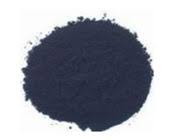Exploring the Rich Heritage and Versatile Uses of Iconic Indigo Yarn in Textiles
The Allure of Indigo A Dive into the World of Famous Indigo Yarn
Indigo, a color that has captured the imagination of cultures around the world for centuries, is renowned not just for its beauty, but also for its rich history and significant role in the textile industry. Among various indigo products, indigo yarn stands out as a remarkable material that embodies craftsmanship, tradition, and artistry. This article explores the unique aspects of famous indigo yarn, its historical roots, and its significance in contemporary fashion and textiles.
Historically, indigo dyeing dates back thousands of years, with evidence found in ancient civilizations across Asia, the Americas, and Africa. The process of extracting indigo dye from the leaves of the Indigofera plant has been refined over generations, and its striking hue has made it a prized commodity among artisans and manufacturers alike. The indigo dyeing technique is steeped in tradition, often passed down through families and communities, ensuring that the skills and art of dyeing remain vibrant.
Famous indigo yarn is often associated with specific regions known for their mastery in dyeing techniques. For instance, Japan is celebrated for its indigo textiles, particularly in places like Tokushima and Kanazawa, where artisans produce unique shades and patterns through resist dyeing methods such as shibori. The Japanese approach to indigo yarn is not merely about achieving a specific color; it is about creating a connection to nature, history, and aesthetics. Artisans carefully consider the quality of the cotton or linen used, the dyeing process, and the final application, resulting in a product that tells a story.
famous indigo yarn

In recent years, the trend of sustainability and ethical fashion has brought indigo yarn back into the spotlight. Many contemporary designers and brands recognize the importance of eco-friendly materials and processes, making indigo yarn a popular choice. The natural dyeing process, which is less harmful to the environment compared to synthetic dyes, appeals to a growing consumer base that values sustainability. As a result, indigo yarn is increasingly used in high-end fashion, artisan textiles, and home décor, blending traditional techniques with modern designs.
Furthermore, famous indigo yarn has a distinctive aesthetic that resonates with many. Its deep shades evoke a sense of calm and sophistication, making it adaptable for various applications. Whether used in denim, woven fabrics, or knitting, indigo yarn brings a timeless elegance that enhances the character of any piece. Designers love to experiment with the myriad of shades that indigo can produce, from the deepest navy to lighter hues, allowing for versatility and creativity in their work.
The cultural significance of indigo yarn cannot be overstated. In many societies, indigo symbolizes wealth, heritage, and identity. It is often linked to traditional garments, rituals, and celebrations, making it an integral part of cultural expression. The use of indigo yarn often reflects regional pride and embodies a sense of community, as artisans collaborate and share techniques to preserve their heritage.
In conclusion, famous indigo yarn represents more than just a color or a material; it is a testament to the ingenuity, creativity, and cultural heritage of countless communities across the globe. As we continue to embrace sustainable fashion and appreciate handmade craftsmanship, the allure of indigo will only grow stronger, connecting us to the past while inspiring future innovations. With its rich history and profound significance, indigo yarn remains an enduring symbol of beauty and tradition in the textile world.
-
Leading Indigo Blue Granular Company for Quality Granules & Export
NewsAug.31,2025
-
Sulphur Black Dye: Deep Black, High Fastness for Textile & Denim
NewsAug.30,2025
-
Black Sulfide: The Molecular Alchemy Behind Superior Textile Coloring
NewsAug.29,2026
-
The Uses Of Indigo Dyeing Cotton Yarn Dye
NewsAug.29,2025
-
The Dye Performance Of Bromo Indigo Blue
NewsAug.29,2025
-
Sulphur Black Dyes Enhance Color Fastness
NewsAug.29,2025
-
Indigo Blue Powder's Chemistry Intrigues
NewsAug.29,2025

Sulphur Black
1.Name: sulphur black; Sulfur Black; Sulphur Black 1;
2.Structure formula:
3.Molecule formula: C6H4N2O5
4.CAS No.: 1326-82-5
5.HS code: 32041911
6.Product specification:Appearance:black phosphorus flakes; black liquid

Bromo Indigo; Vat Bromo-Indigo; C.I.Vat Blue 5
1.Name: Bromo indigo; Vat bromo-indigo; C.I.Vat blue 5;
2.Structure formula:
3.Molecule formula: C16H6Br4N2O2
4.CAS No.: 2475-31-2
5.HS code: 3204151000 6.Major usage and instruction: Be mainly used to dye cotton fabrics.

Indigo Blue Vat Blue
1.Name: indigo blue,vat blue 1,
2.Structure formula:
3.Molecule formula: C16H10N2O2
4.. CAS No.: 482-89-3
5.Molecule weight: 262.62
6.HS code: 3204151000
7.Major usage and instruction: Be mainly used to dye cotton fabrics.

